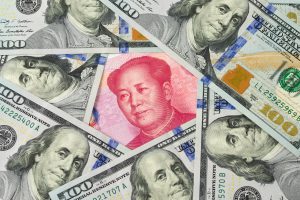Robert Farley

How does China weaponize the lending of money to the developing world? A recent study from the team of Anna Gelpern, Sebastian Horn, Scott Morris, Brad Parks, and Christoph Trebesch investigated a sample of China’s overseas lending contracts, finding that Beijing has a standardized approach to lending that sets it apart from other major creditors. The study sought to find concrete evidence to help discern whether or not Chinese lending is characterized by mechanisms that enable Beijing to squeeze debtor countries, or at least squeeze them beyond the international standard for such coercion. What many have guessed about Chinese lending appears to be true: China has built-in coercive mechanisms in its loan contracts that enable Beijing to apply a wave of different coercive effects on recalcitrant debtors.
The study assembled a dataset of 100 debt contracts, including borrowers in 24 countries and amounting to $36.6 billion, out of a universe of some 2,000 contracts over the last 20 years. They found that China tends to employ a standardized set of loan contracts that have a series of commonalities. The standardized contracts they study included extensive confidentiality clauses, reducing transparency and making study difficult. These contracts shroud China’s lending practices in a cloak of confidentiality, making it difficult for evaluators and monitoring agencies to get a good sense of how the loans perform. The contracts require different treatment for Chinese debts during periods of debt restructuring; Chinese debts have preference over other kinds of debt even when the international community deems it necessary to come to agreement with a government that has become over indebted. Finally, China’s contracts have a variety of cancellation, acceleration, and stabilization clauses that enable China to apply pressure to debtors who run into trouble.
Arguably, China’s approach to overseas lending represents a rational reaction to the current financial environment. Ensuring that Chinese claims have precedence makes sense, as does detaching Chinese investment from the wider lending community. For borrowers, the Chinese approach offers something transactional, unburdened by the post-colonial politics that often infect relations between developing countries on the one hand and Europe and North America on the other.
But these practices are calculated to maximize the political impact of Chinese financing. China’s commitment to economic efficiency has always been colored by a desire to maximize political influence. Debt has often been used for coercive political purposes in international politics, more often than many theories of international politics are quite comfortable with. China’s lending has been attractive to borrowers in the Global South because it escapes some specific coercive elements, including policy conditionality (neoliberal Washington consensus items) and the very public and very embarrassing process of debt forgiveness and debt restructuring that often accompanies a state’s inability to pay. But it is also clear that China’s lending practices have their own specific coercive elements, and that these elements may, in the long run, be more destructive than borrowing from traditional lenders.
No comments:
Post a Comment